Hiking in Ireland is no longer an insider tip. Ireland offers over 42 signposted long-distance hiking routes in the most beautiful landscapes…
Page Contents (click line to jump the text)
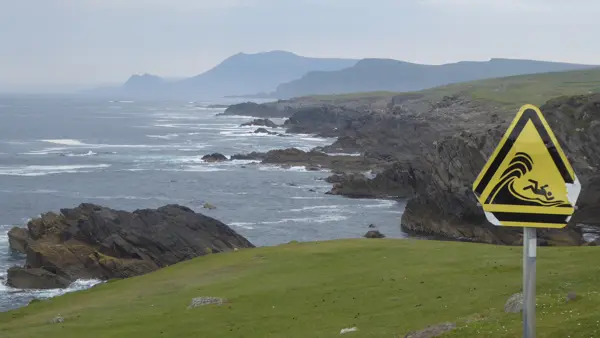
Intro
From typical Irish hilly pastureland, to great mountains and breathtaking coasts with steep cliffs and white sandy beaches – there is something for everyone.
In addition, there are countless loop-walks, i.e. day-long circular routes in all corners of the island.
But when planning, there are often a lot of questions to answer – and that’s what this article is about.
I work and live in Ireland – as a second home. My family and I originate from Germany.
In my free time I like to hike and have traveled the island in all directions – in all seasons and weather. So I hope I can help you a little bit with your vacation planning.
Here you can find my tips for your upcoming hiking vacation in Ireland:
Tip 1: The best form of travel for you – on your own or organized?
Ireland is not difficult. Even if you are rather inexperienced in hiking or maybe don’t speak English that well, it’s no problem to travel on your own in Ireland.
With a little bit of English you will get along fine, because the Irish make it easy for you. They are usually very nice and very helpful.
And if the hike turns out to be more strenuous than expected, you can shorten your day’s hike and take a cab for the last kilometers to your accommodation.
There is actually no compelling reason to book an organized walking tour in Ireland, unless you want to!
One of the advantages of an organized tour is that you book once and get all the information you need.
Ideally, your overnight luggage will be transported from accommodation to accommodation so that you only hike with light day luggage.
If there is a problem, the organizer will help to solve it – even on Saturday and Sunday? Better ask beforehand…Of course, the service costs a little something. If the budget is not a bottleneck, this is not a problem, otherwise you might prefer to do the trip on your own?
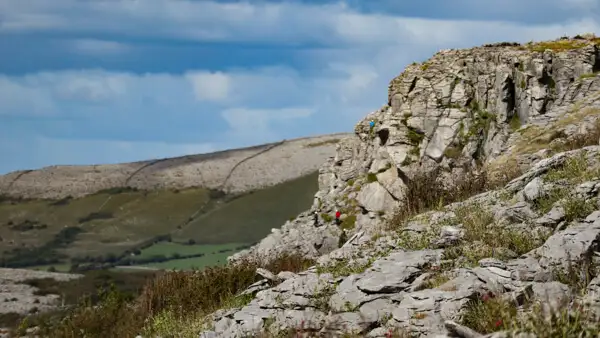
There are organized group tours and organized-individual tours. If you like to go in company, you can do that. The advantage: you’re traveling with like-minded people, ideally you’ll meet nice people and you won’t be alone at dinner. Disadvantage: Groups can also be annoying, especially if the general running pace differs too much from yours.
Organized-individual means that you get an information package, the accommodations are already booked and the luggage transport in the ideal case also. You hike for yourself and at your own pace.
Which is the best form of travel for you, you have to decide. But as I said, if you want to travel on your own, it is quite easy in Ireland.
Tip 2: The best form of hiking for you – day hikes or long-distance trails?
There are now 43 signposted long-distance hiking trails in Ireland and new ones are being created all the time. Some of them are combinations of existing trails that are connected to each other.
It is easy to find a suitable long distance trail for you to walk for several days or a good week at a time.
Some nice examples are the Wicklow Way, the Dingle Way, the Beara Way, the Kerry Way, the Sheep`s Head Way, the Western Way Galway (Connemara) and the Western Way Mayo. I have already written articles about some of them – just check my articles in the menu, category Hiking).
If you are not sure if you want to walk 25 kilometers (with luggage) every day for a week, you can alternatively do a round trip with day hikes. I have written an article about this as well.
Then you can walk more or less depending on weather, desire and condition and see different areas of Ireland. You can walk parts of the long-distance trails, or some of the local looped walks, which exist almost everywhere in Ireland.
The start and end points of the major long distance trails are usually quite easy to reach by public transport. For day hikes, however, it is much more difficult with bus or cab, there is no way around the car.
Tip 3: Choose the best season for your hike
The internet is full of articles about “the best time to travel”, for whatever reason. I think the best time to travel depends a lot on your own needs!
Most travelers probably hike the Irish island in the summer months from May to September. There it is warmest, there is statistically less precipitation than in the winter half-year and generally make it all so…..
That’s not wrong at all.
But I personally prefer to run at 10-15 degrees than at 25 degrees. And because I mainly do half-day tours, I can arrange them according to the weather forecast so that I walk sometimes in the morning and sometimes in the afternoon.
My personal favorite hiking months are in spring from late March to early May and in fall from late August to late November.
In the early and late season is much less busy, accommodations are partly closed, but if open then also much cheaper. Flights and rental cars are also much cheaper in spring and fall than in summer.
Rain is definitely an issue between December and February-March. During this time stormy winds blow across the Atlantic. From spring to fall there are showers or drizzle every now and then, but persistent low-pressure weather is rare.
I always pack my rain jacket, but I don’t end up needing it more often than I would in Germany either.
So, choose summer if you prefer it, but don’t be afraid to choose spring or fall. The time that suits you best is your best time to travel!
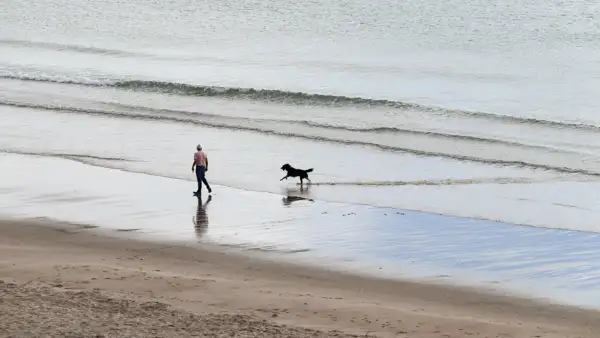
Tip 4: Where is the best place for hiking?
Mountains or sea? Or both? You can find beautiful mountains on the Wicklow Way south of Dublin (my home area) and on the Kerry Way in Killarney National Park. Also on the Western Way Galway and the Western Way Mayo.
Seaside walks can be found on the Dingle Way and on the Sheep`s Head Way, the Beara Way and partly on the Kerry Way.
The Wicklow Mountains are located on the east coast and start south of Dublin – so they are easy to reach even if you only have a few days.
Also, on the southeast coast you’ll find over 70 kilometers of sandy beaches and statistically the sunniest weather on the island. So you can combine a few days of hiking, a bit of chilling on the beach and a stay in Dublin without long travel times.
All other suggestions are on the west coast, the Wild Atlantic Way. The wild Atlantic coast is spectacularly beautiful because of its high cliffs. You should have been here once and you will want to come again – I promise!
So where to now? Who says you only get to go to Ireland once… 🙂 .
Tip 5: Arrival – by car or public transport
I have already mentioned it before: All major places in Ireland are accessible by long-distance bus or, in some cases, by train. Depending on the place, you may have to change trains once or twice and plan accordingly.
Many of the long-distance hiking trails can be reached by public transport.
Unfortunately, this is not the case for many day hikes or looped walks. The entry points are often located on a hill in the middle of nowhere, where you can hardly get to without a car.
If you plan a round trip with day hikes, I would travel with your own car (ferry Cherbourg-Dublin or Cherbourg-Rosslare) or rent a car in Dublin at the airport.
Tip 6: The choice of hiking clothes
You probably know this: if you have your rain jacket with you, you just lug it around, but once you leave it at home, it pours!
Always take a rain jacket with you when you go hiking, and in the cooler season you can also take rain pants. Alternatively, there are good hiking pants and jackets with waterproof membranes. The good, waterproof ones are often more expensive, but then you don’t need to pack extra plastic stuff.
Tip 7: The choice of hiking shoes
I can only recommend sneakers on the beach or for easy short distances. Otherwise, the ground is often gravel or more or less rocky. Sturdy shoes are recommended, especially if you walk with a backpack.
In summer and for day hikes, mid-height, airy hiking shoes are sufficient. If they get wet, it is not so bad, because you are soon back at the car and can change.
For multi-day hikes, or in cool weather, I myself always wear waterproof and ankle-high hiking or trekking boots. I have several pairs of them and then choose one depending on the weather and the route. Especially if you are traveling for several days, you want to keep your feet dry, believe me!
By the way, good hiking socks made of synthetic fibers or synthetic-wool blend also contribute to this. They stay warm even when wet and dry quickly. Socks made of cotton are completely unsuitable because cotton quickly gets wet, then cools and then dries poorly.
Tip 8: The choice of backpack
Let’s get back to the question of the form of travel: if you do a long-distance hiking trail and carry your own luggage, then I recommend in a good hiking backpack in the 55-75 liter class.
With tent and camping equipment I would choose it a little larger, without tent 55-60 liters are easily enough.
Important is a waterproof rain cover and a good carrying system, which distributes the weight of the luggage away from your shoulders and well on your hips.
If you have booked luggage transport or do day hikes, a small daypack around 30 liters is sufficient. Rain gear, food and drink for the day, a sweater, hiking guides and maps and a few small items like sunglasses or sunscreen, that’s all you need.
If you don’t like a rain cover, you can just pack the contents of the pack in several waterproof pack bags.
For some rocky trails, like the Kerry Way, you may also want to bring extendable walking poles to take the strain off your knees, especially downhill.
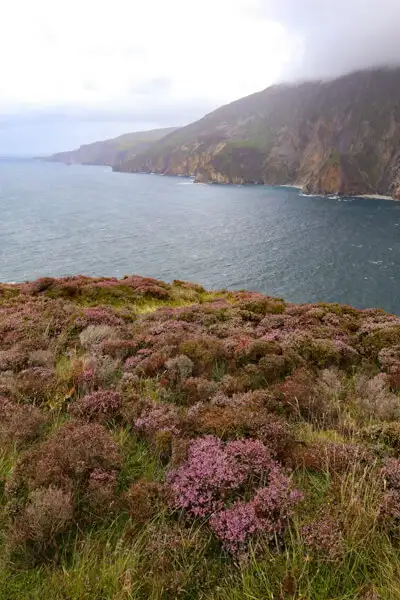
Tip 9: Don’t forget important accessories
In summer, the already mentioned sunscreen may be in the luggage, as well as sunglasses and a cap or hat.
Mosquitoes are less of a problem in Ireland than the midges in the Scottish Highlands, but there can be some. If you plan to camp by lakes or rivers in the summer, mosquito repellent is a good idea.
It’s easy to fall over, support yourself with your hand and end up with two injuries – pack a small first aid kit. Maybe also a few blister plasters for the feet.
I don’t like a stiff neck and usually wear a tube scarf (Buff). In the cooler months, a hat and light fleece gloves are also a good idea.
Tip 10: Get inspired – blogs and videos
Check out Youtube, there are many hikers who have left their impressions of Ireland there. A little video searching will not only get you in the mood for the trip, but will also help you plan.
If you prefer reading, then you are already quite right on this blog -just read some of my articles in this category (Hiking). I can also highly recommend the blog and videos from Tough Soles – check them out.
You can find a nice video from Tough Soles here.
Tip 11: Information for planning – maps and hiking guides
You can find maps and hiking guides for almost every known long distance hiking trail in Ireland on Amazon or via Google. I have already linked specific sources in my articles on the individual long-distance hiking trails.
An interesting online store for maps and guides in English can be found here. The Irish author has built websites to several long distance hiking trails and offers a good selection.
Ellie and Carl from Tough Soles have walked 42 long-distance trails themselves and have created their own very good hiking maps, which you can download and print out for free on their website.
Tip 12: Electronic helpers: Apps and GPS
Experienced hikers may already have a Garmin GPS unit with electronic maps or a GPS from another manufacturer. All others might want to think about such an investment? GPS have the advantage that they still have reception in areas where smartphones like to say goodbye….This is quite often the case in the Irish barges. So if you go hiking in the mountains, you should have one.
Almost everyone has a smartphone with them anyway. So why not download a hiking app with maps to your smartphone? Take a look at Hiiker, Komoot or Outdooractive, for example.
Long-distance hiking trails and loop walks are usually well signposted. Mostly, because at the crucial intersection the sign is missing, the GPS is at home and the smartphone has the battery empty….
In that case, the good old paper map still helps, which I would take along at least as a backup.
Tip 13: How will the weather – important apps
I check the weather regularly. This helps me with planning, packing and on the road. Especially for day trips, where I am a bit flexible in terms of time and place. In principle, any useful weather app on the smartphone is sufficient for this.
I find the weather app of the Irish meteorological service, Met Éireann, even better. There you get detailed local forecasts with a map on which you can see the weather fronts moving – highly recommended.

Tip 14: How to stay overnight – with tent or rather B&B?
I often get this question. If you are interested in wild camping in Ireland, I can recommend this article of mine, which I will link for you at the end of this article.
Some long distance hiking trails have campsites on your route, but usually not for all stops. In the end you can decide if you want to combine camping and wild camping, or camping and hostel.
More comfortable is certainly with B&Bs or combination of B&B and hostels. But also more expensive.
In the end you have to decide how much luggage you want to carry and how high your travel budget can be. Hotel/B&B and luggage transport is certainly the most comfortable option.
Tip 15: General tips for entering Ireland.
The Republic of Ireland is a member of the EU, but not of the Schengen Agreement. This means that you will need your passport to enter the country.
The Republic of Northern Ireland is part of the UK and is no longer in the EU since Brexit.
A German driver’s license is sufficient for renting a car. However, you will need a credit card for the deposit reservation. On the Irish island you have to drive on the left side of the road.
the currency is the Euro. Major credit cards and debit cards are accepted almost everywhere. However, there may be smaller B&Bs that do not accept cards, so you should have some cash with you.
You can also get cash at any ATM in Ireland, but in small towns there is often no bank. There you can get cashback in the supermarket or at the gas station, i.e. you fill up your tank and get e.g. another 100€ in cash, both of which will be charged to your debit card.
The electricity is 230V, like in Germany, but with three-pin English plugs. So you need a travel adapter for your smartphone charger. If necessary, you can buy one at the airport.
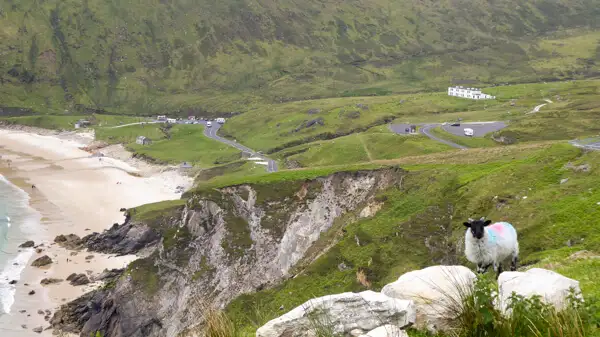
Tip 16: Book in time
I would book B&Bs in advance, because the few rooms are often occupied in the season and the next option may be a few kilometers away.
You can usually find campsites on Google Maps. Hostels and B&Bs are also often listed there, but not always.
We ourselves use Booking.com or Airbnb apps to book B&Bs. both platforms work very well in Ireland.
Tip 17: Plan sightseeing into your tour
Ireland has a troubled history and a rich culture. If you have some interest in it, be sure to plan a few sights into your tour.
Medieval monasteries, like Glendalough or Clonmacnoise, magnificent castle-like gardens, like at Powerscourt Estate, a castle in the middle of the old town, like in Kilkenny or magnificent castles, like Cashel Rock, Cahir Castle or Bunratty Castle are definitely worth seeing!
Also in Dublin, you can see the Book of Kells in the old library of Trinity College, visit Christchurch Cathedral and the City Castle, and see an entertaining exhibition on Vikings and the Middle Ages in Ireland at Dublinia. There are also plenty of museums, open-air museums, theaters and exhibitions for those interested.
Tip 18: Visit festivals or cultural events on the road.
The Irish are a family and social people. They love to celebrate, especially in the summer, all kinds of festivals that take place all over the country.
If you know where your trip will take you, do some research on Google to see if there is a festival going on in your travel period.
There are music festivals, theater festivals, reading and poetry festivals, food festivals, such as the famous Oyster Festival in Galway, there are horse markets with and without live music, rural fairs (with music!), garden festivals, vintage car shows, air shows, vintage trekker shows and much more.
These are events where the Irish get together and celebrate – and tourists are welcome to join in!
Tip 19: Spend the night in Dublin on the way home
If you like cities like Hamburg, you’ll like Dublin too. I’m not a city person, but I do enjoy walking around Dublin for a few hours. The nicer, older center is around Temple Bar and stretches roughly from Trinity College to Christ Church Cathedral.
North of that runs the River Liffey and the old harbor is also within walking distance. If you want, you can also visit the Guinness Brewery or the Jameson Distillery.
And for sure you’ll find something to shop for and so you don’t have to carry everything around during your vacation, I would do Dublin on the last day.
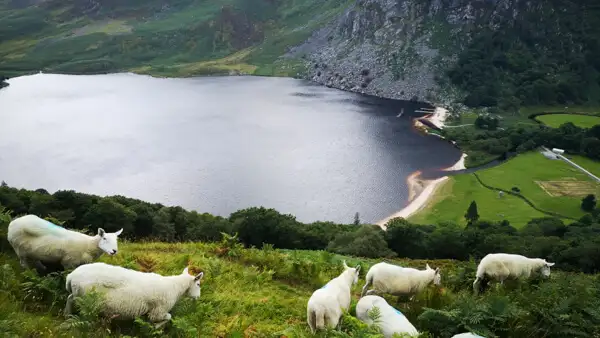
Tip 20: Respect the farm animals
On your hike you might cross private land again and again. Unlike in Germany, farm roads in Ireland are not open to everyone, but it is up to the landowner to allow hikers to use the trails. Therefore, the creation of long-distance trails in Ireland is not very easy, because the organizers need many approvals for it.
It is therefore even more important for all hikers, including those who come after you, that you behave respectfully and contribute to a good relationship between farmers and hikers: When you open a pasture gate, close it again behind you, so that the animals do not run away. If you see that the hiker in front of you has left the gate open even though there are animals in the pasture, close it for both of you.
Dogs must walk on a leash near grazing animals. This is especially important around sheep! On some long-distance trails, such as the Sheep`s Head Way, dogs are not allowed because the farmers have had bad experiences with free-roaming dogs.
Also in some forests the forestry insists that dogs walk on a leash.
Open fires are a no-no. If you camp wild, on trails where it is tolerated, then you can usually use a camp stove, but no open fires.
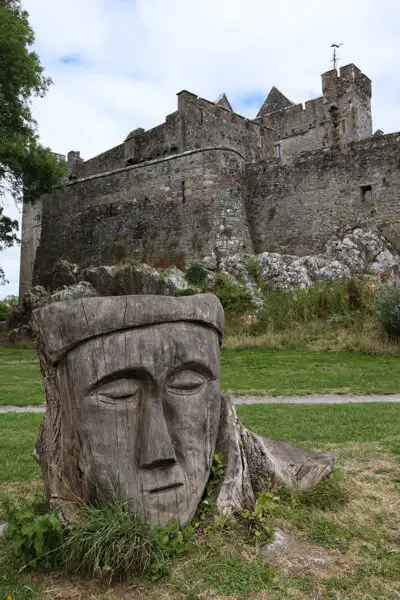
Tip 21: Leave no Trace
Leave no Trace, is an initiative to respect the nature around you. This includes, for example, staying on paved trails and not leaving trash behind. Behave as a good guest, then you will be gladly seen again – and nature will be sustainably protected in the best possible way. You can find the Leave no Trace Ireland page here.
Tip 22: Take it as it comes and enjoy the moment!
Yes, sometimes things may not go as you planned. This is normal and part of the travel experience. The Irish are very relaxed in such cases and take it with humor. No stress, what for, you are on vacation after all.
If you get rained on during the hike, go to the pub afterwards – good food, drink, and if you’re lucky, music, will help restore morale.
You plan a tour around the island and after 3 days you are hardly further than on the first day? Never mind, on the narrow roads you’ll drive slower than anywhere else, it’s normal. Just come back next year and do the second half!
We went on vacation to Ireland for years before settling here. Why? Ireland decelerates! The laid back friendliness of the people is contagious and the nature is beautiful. Why stress – enjoy the moment!
Conclusion
I hope that I could help you with the planning of your hiking trip in Ireland.
If the agony of choice is too much, just start with a hike that appeals to you. You can’t really go wrong. And if you like it, come back and try another one….
With that in mind, I wish you a great hiking vacation on the Emerald Isle!
More interesting articles for you
HIKING AND WILD CAMPING IN IRELAND – IMPORTANT TIPS!
HIKING THE WICKLOW WAY – ALL INFO FOR YOUR VACATION PLANNING
THE SHEEP`S HEAD WAY – HIKING ON THE SOUTHWEST COAST OF IRELAND
SOUTHERN IRELAND ROUND TRIP WITH DAY HIKES – 9 GREAT IDEAS FOR YOU
THE BEARA WAY – ALL INFO FOR YOUR INDIVIDUAL HIKE
Photo credits cover photo: Ulrich Knüppel-Gertberg (www.irland-insider.de, www.ireland-insider.com)